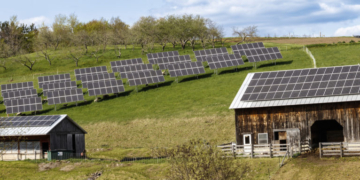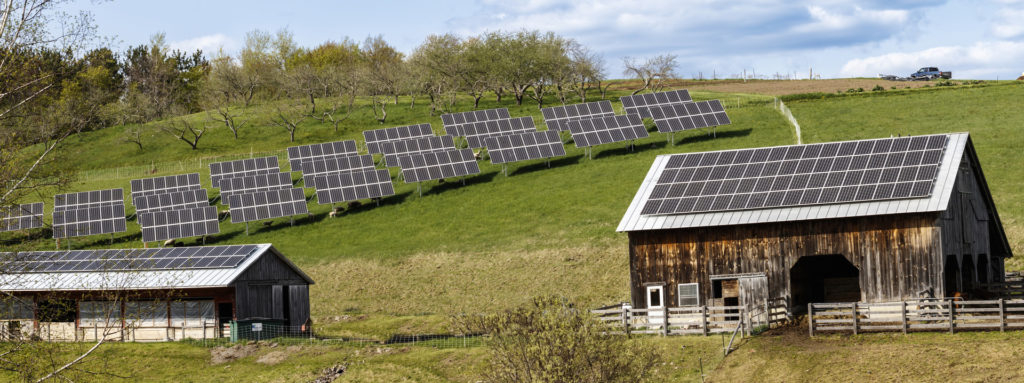Vice President JD Vance cast the tie-breaking vote as the U.S. Senate approved its final version of the One Big Beautiful Bill Act (OBBBA), 51-50, at mid-day Tuesday. That happy outcome for the Trump administration and congressional Republicans did not come without its share of high drama, much of which centered on language to phase out wind and solar subsidies contained in the 2022 Inflation Reduction Act (IRA).
The Senate Finance Committee’s version of the OBBBA, released on June 16, 2025, served as the working baseline on those provisions. Unlike the House version, which imposes a strict 60-day construction start deadline and a 2028 placed-in-service requirement, the Senate’s initial change would have allowed full incentives for projects beginning construction by the end of 2025, with a stair-step phase out through the end of 2028.
But over the weekend, the bill was amended with a more restrictive requirement that projects be “placed in service” by the end of 2027. The change aligned more closely with the House’s stricter timeline and would significantly limit eligibility for projects not operational by 2027, posing challenges for developers with longer project timelines.
To almost everyone’s surprise, the revised language also imposed a new excise tax to be placed on any project which could not prove it was free of Chinese components. That would present a practical impossibility given China’s dominant position in the renewable energy space.
A Reuters report quotes several wind/solar developers and boosters saying the stricter provision and new tax would do severe damage to an industry which many critics say wouldn’t exist without massive government subsidies. Tesla founder and CEO Elon Musk, who has invested heavily in the solar industry, said on X that the new language “would be incredibly destructive to America!”
But Energy Secretary Chris Wright shot back, posting on his own X feed, “The more we load our grid with intermittent generation, the worse the grid performs during times of maximum demand.”
An amendment offered Monday by Alaska Sen. Lisa Murkowski, and Iowa Sens. Chuck Grassley and Joni Ernst would have enabled many developers to game the system and qualify projects for the incentives on which progress had barely begun by a more generous deadline. Rather requiring projects to be “placed in service” by the end of 2027, the amendment would go back to the June 16 draft’s requirement for projects to “commence construction” by the end of 2028. That lesser restriction would enable developers to claim the incentives for any project on which they had turned a small amount of earth with a bulldozer.
It was unclear whether the new amendment would also reinstate the Senate’s original stairstep phaseout of the subsidies, but it would eliminate the new excise tax provision.
Early Monday, Sen. Ernst told reporters that the amendment would not receive a stand-alone vote on the Senate floor, as Majority Leader John Thune prepared to move the full package to a final roll call. But a few minutes later, Politico reported that at least some of the language would be considered as part of a “wraparound amendment” on a variety of issues.
The final compromise, as reported by Politico at 11:30 a.m. ET, was not surprising: In addition to eliminating the new tax, it includes a fairly minor tweak that will give some planned wind and solar projects one year after the bill is enacted to commence construction, while still retaining the hard, end-of-2027 deadline for them to be placed into service.
However, even this softer language, if included in the final version of the OBBBA, would severely inhibit the future growth of an industry which has literally been built atop a federal subsidy house of cards.
If, and it’s a big if given the remaining steps to final passage, these and other energy provisions remain in the final OBBBA, then the onus will fall to more traditional sources of power generation – gas, coal, and nuclear – to meet the future requirements of rapidly expanding power demand. Those industries say they’re ready for the challenge. They may well get the chance to prove their case.
David Blackmon is an energy writer and consultant based in Texas. He spent 40 years in the oil and gas business, where he specialized in public policy and communications.
The views and opinions expressed in this commentary are those of the author and do not reflect the official position of the Daily Caller News Foundation.
(Featured Image Media Credit: Photo by Emily Boren/Us Department of Energy, Flickr.com)
All content created by the Daily Caller News Foundation, an independent and nonpartisan newswire service, is available without charge to any legitimate news publisher that can provide a large audience. All republished articles must include our logo, our reporter’s byline and their DCNF affiliation. For any questions about our guidelines or partnering with us, please contact [email protected].

















 Continue with Google
Continue with Google